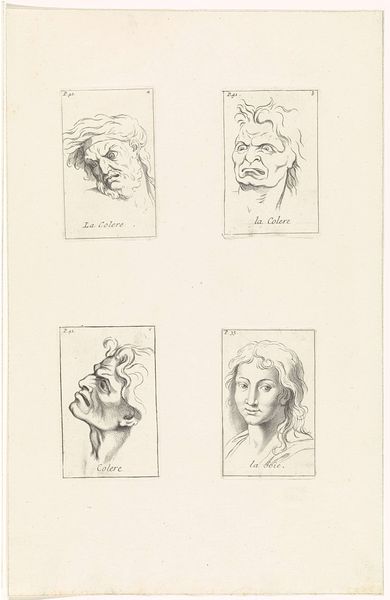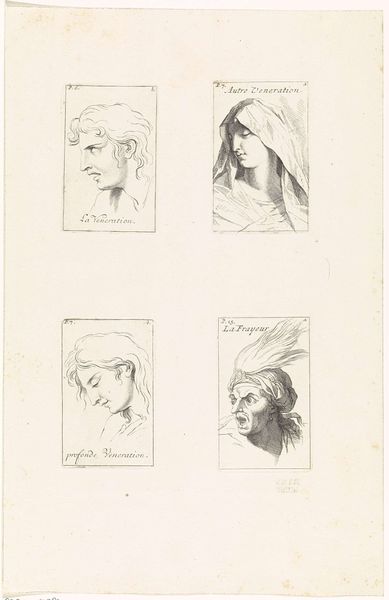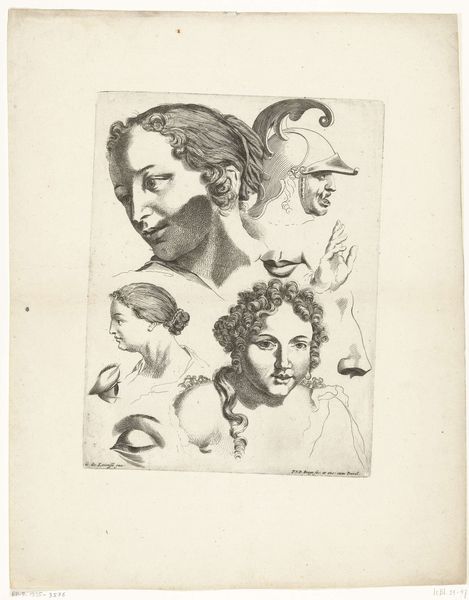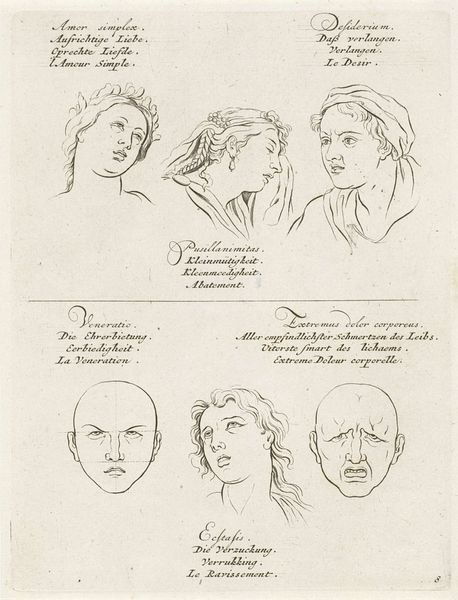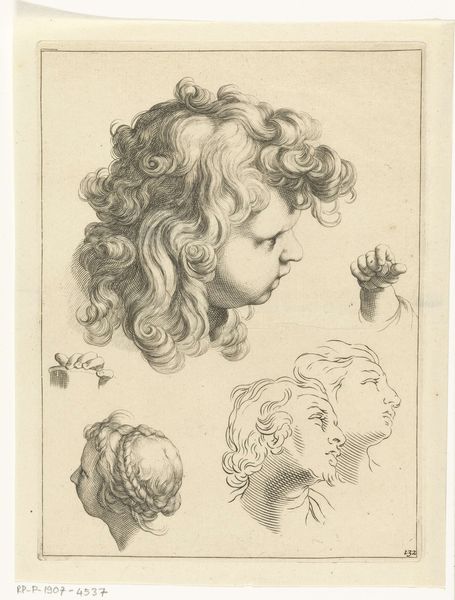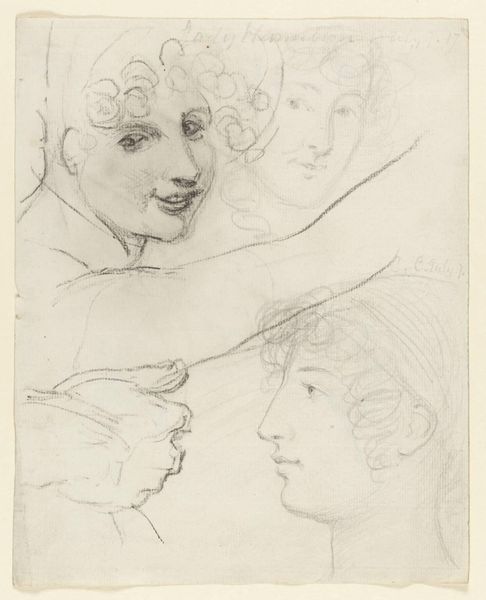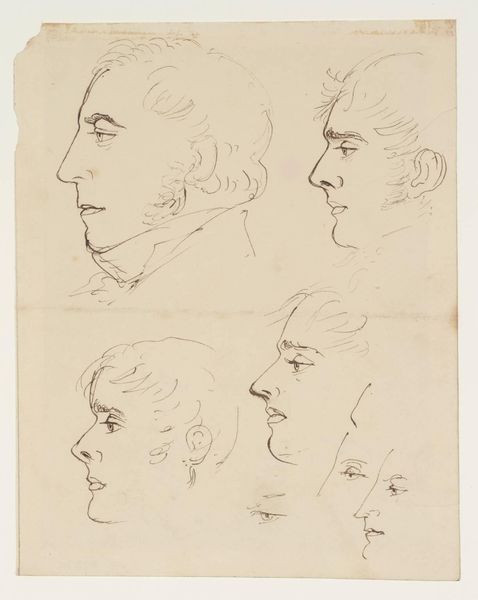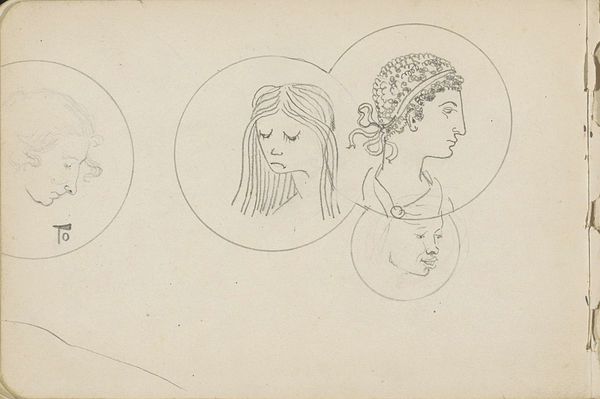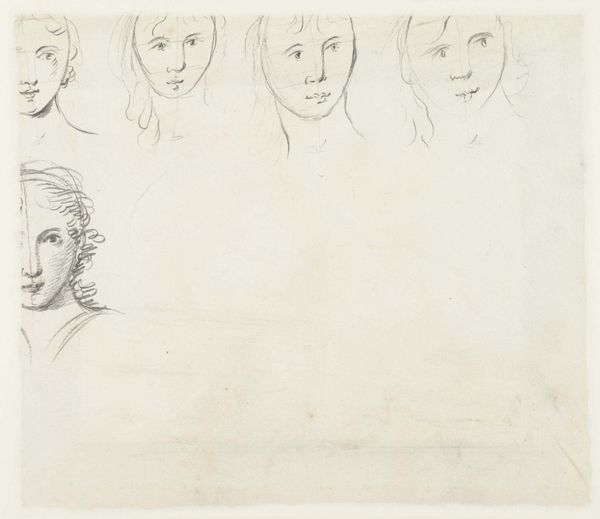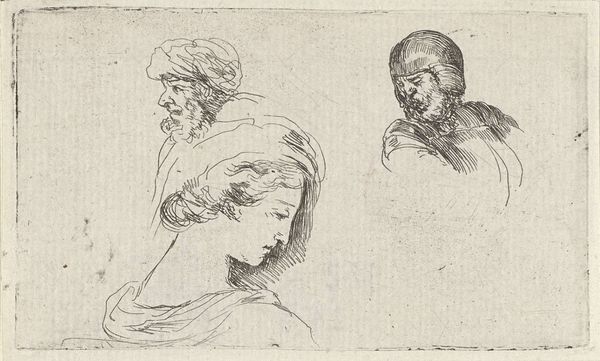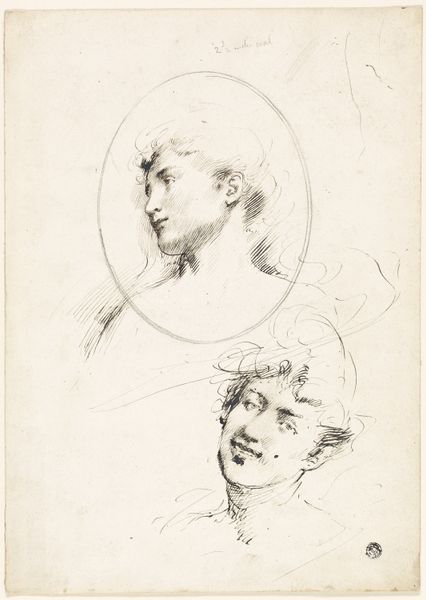
drawing, paper, ink, engraving
#
portrait
#
drawing
#
allegory
#
narrative-art
#
classical-realism
#
figuration
#
paper
#
ink
#
line
#
genre-painting
#
history-painting
#
academic-art
#
engraving
#
realism
Dimensions: height 95 mm, width 59 mm, height 95 mm, width 59 mm, height 94 mm, width 61 mm, height 94 mm, width 56 mm, height 365 mm, width 234 mm
Copyright: Rijks Museum: Open Domain
Editor: So, this is "Voorstellingen van verschillende emoties," or "Representations of Various Emotions," a 1711 drawing by Bernard Picart, using ink and engraving on paper, at the Rijksmuseum. It’s… interesting, almost like a scientific study of facial expressions. What stands out to you about it? Curator: What immediately strikes me is the artist's emphasis on line. The use of engraving, a process that demands meticulous labor, to depict emotions is telling. The starkness of the medium seems at odds with the nuance of human feeling, doesn’t it? Editor: I suppose so. Why choose such a…rigid medium? Curator: Consider the period. Early 18th-century art was deeply tied to systems of patronage and intellectual exchange. Engravings like this weren't just art objects; they were reproducible commodities. Picart's choice likely reflects both a market demand for accessible imagery and an engagement with the Enlightenment's focus on categorizing and understanding the world through observation, almost a manual. Are they true reflections, or assigned reflections by the elite class? Editor: That makes sense. So the emotional expressions themselves were, in a way, being mass-produced. Curator: Exactly! And who consumes these images? Who defines which emotions are valued and how they should be displayed? These drawings participated in shaping social expectations surrounding emotional performance, think about the cost and effort put into distribution and popularization. Editor: It’s fascinating to think about how the economics and processes of art creation can influence our understanding of something as personal as emotions. Curator: Precisely. This work challenges us to look beyond the surface and consider the material and social conditions that shape our perceptions. I wonder how printing changed what was to be captured and disseminated. Editor: This gives me a lot to think about. I originally saw it as a simple study of emotions, but it’s clearly far more complex!
Comments
No comments
Be the first to comment and join the conversation on the ultimate creative platform.
